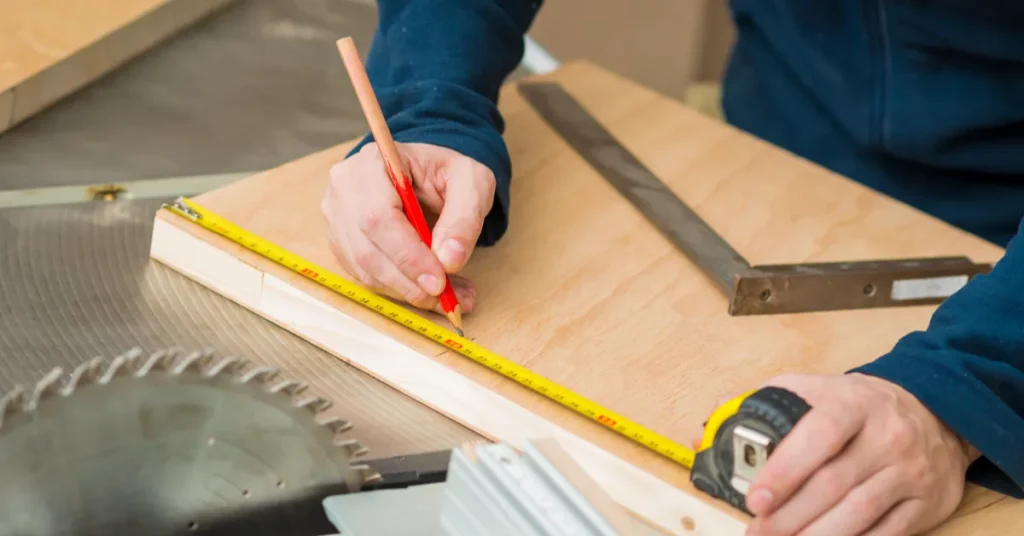Two mil is equivalent to 0.002 inches in thickness. This measurement equals approximately 0.0508 millimeters.
Understanding measurements like 2 mil is essential for a variety of industries, from packaging to manufacturing. The term ‘mil’ is a unit of thickness often used in the United States to denote one-thousandth of an inch.
When precision is key, as in the case of plastic sheeting, bags, or tapes, knowing the exact thickness in mils is crucial.
This ultra-thin measurement of 2 mil demonstrates a very fine thickness, often used in items that require a delicate balance between protection and flexibility.
For businesses and consumers alike, recognizing the practicality of such dimensions ensures that they make informed decisions regarding their material choices.

Grasping The ‘mil’ Measurement
Grasping the ‘Mil’ Measurement can often leave many scratching their heads, but it’s vital when dealing with materials like plastic sheeting or tape.
Understanding this unit of measurement ensures precise purchasing and application. Let’s demystify ‘mil’ and explore its thickness, particularly concerning the 2 mil measurement.
The Basics Of Mil-thick Units
The term ‘mil’ does not refer to the military, but rather to a unit of thickness. One mil is equal to one thousandth of an inch.
To fully grasp this, consider a dime’s thickness, roughly 53 mils, or simply, 0.053 inches. When we say something is 2 mils thick, we mean it’s 0.002 inches thick. That’s very thin!
- 1 mil: 0.001 inches
- 2 mil: 0.002 inches
- 53 mils: approximately the thickness of a dime (0.053 inches)
Comparing Mil To Other Measurement Systems
When comparing mils to other measurement systems, it’s helpful to have a reference table:
| Measurement System | Equivalent to 1 Mil |
| Inches | 0.001″ |
| Millimeters | 0.0254 mm |
| Microns | 25.4 microns |
It’s clear that a mil is a metric that stands on its own, separate from the more commonly known millimeter.
Knowing this distinction is essential when working across different measurement systems. In industry terms, 2 mils might serve as a standard measure for certain films or protective coatings, highlighting its practical daily importance.
Everyday Examples Of 2 Mil Objects
Have you ever wondered just how thick a 2 mil object really is? To give you a better understanding, let’s explore some everyday items that have this exact thickness.
Household Wraps And Their Thickness
Kitchen cling wraps often measure around 2 mil. This standard thickness helps keep your food fresh without being too bulky.
Here’s a quick look at common household wraps:
- Saran wrap – preserves leftovers with ease
- Aluminum foil – protects and cooks food evenly
- Wax paper – ideal for non-stick food preparation
Industrial Uses Of 2 Mil Materials
In industrial settings, 2 mil materials serve many purposes. They protect goods during shipping and handle tough jobs.
| Industry | Use of 2 Mil Material |
| Automotive | Seat covers for protection |
| Construction | Concrete curing covers |
| Painting | Drop cloths to keep floors clean |
Measuring Durability In Mils

Understanding the thickness of materials is vital in multiple industries. “Mils” measure the thickness of various items, from plastic sheeting to paint coatings.
Knowing how thick 2 mil is can help determine the material’s strength and overall durability.
Material Strength At 2 Mil Thickness
A thickness of 2 mil equates to 2 thousandths of an inch. Despite its thinness, this measurement can still provide a considerable amount of strength, especially in the right applications. Here are common materials that often come in 2 mil thickness and their associated uses:
- Plastic Sheeting: Ideal for lightweight covering or as a vapor barrier in construction.
- Paint Coatings: A 2 mil paint job is standard for corrosion resistance and aesthetic finish on cars.
- Aluminum Foil: Useful in kitchens and packaging, maintaining freshness and durability.
Each material serves specific needs but shares the common ground of 2 mils measuring their thickness. This thickness provides a delicate balance between flexibility and protective qualities.
The Relationship Between Mil And Material Longevity
Thickness in mils is a key indicator of how long a material will last. Thicker materials often boast greater longevity, but 2 mil offers its unique advantages:
| Material | Advantages |
| Plastic Sheeting | Resists puncture, offers protection over a short term duration. |
| Paint Coating | Provides sufficient protection without adding excess weight. |
| Barrier Films | Promotes product longevity by preventing moisture and gas ingress. |
Although 2 mil thickness may appear slim, it serves as a crucial factor in the lifespan of various products.
The Production Of 2 Mil Substances

Understanding the production of 2 Mil substances is essential for industries where precision is key. A ‘mil’ is a measurement unit. It stands for thousandth of an inch. In 2 Mil, the thickness is two-thousandths of an inch.
This level of thinness is common in materials like plastics and tapes. Let’s dive into the meticulous world of creating these slender products.
Manufacturing Processes For Precision
The journey to produce 2 Mil items begins with precision. Manufacturers use specialized equipment. Each machine must operate with extreme accuracy. Achieving the perfect 2 Mil thickness involves several steps:
- Calendaring – This process uses high-pressure rollers. It flattens the material to the desired thinness.
- Extrusion – The raw substance is pushed through a die. This creates a thin film.
- Casting – A liquid is poured onto a moving belt. It solidifies into a thin sheet.
After these steps, a 2 Mil product takes shape. Each process must be closely monitored. Consistency in thickness is critical.
Quality Control In Mil Measurements
Quality control is vital in manufacturing 2 Mil products. Small errors can cause big problems. Teams of experts check the thickness during the process. They use tools like micrometers and laser gauges.
| Quality Control Tool | Function |
| Micrometer | Measures the substance’s thickness. |
| Laser Gauge | Scans for uniformity across the material. |
| Optical Comparator | Ensures accurate dimensions through magnification. |
Quality assurance teams record every measurement. They ensure the final product meets the 2 Mil specification. Only after rigorous testing do these precise materials make it to the market.
Choosing The Right Thickness For The Job
Understanding mil thickness is key to any project. Two mils equal two-thousandths of an inch. This measurement matters in packaging, painting, and construction.
The right choice can save resources and enhance durability.
Selecting Suitable Mil Thickness For Various Applications
Different tasks require different mil thicknesses. Choose according to project needs. Thickness affects performance, protection, and price.
- Plastic Sheeting: For lightweight protection, 1-4 mils suffice. Heavier duties need 4-6 mils.
- Trash Bags: Kitchen bags perform well at 0.9-1.5 mils. Yard waste requires 1.5-3 mils.
- Painting: Drop cloths often range between 0.5-2 mils.
- Industrial Uses: Shipping materials start at 2 mils and can go up to 6 mils for heavy items.
Cost-benefit Analysis Of Thin Materials
Opting for thinner materials can cut costs. Yet, durability might be compromised. Strike a balance between quality and economy.
| Mil Thickness | Cost | Suitability |
| 1 Mil | Low | Single-use or light items |
| 2 Mils | Moderate | Variety of applications; good balance |
| 3 Mils and above | Higher | Long-term use or heavy items |
Thin materials often serve well in cost-sensitive projects. Yet, ensure they match the job’s demands to avoid waste and repeat purchases.
FAQs About How Thick Is 2 Mil
Is 2 Mil Plastic Thick?
A 2 mil plastic sheet is considered thin, typically used for lightweight covering and packaging purposes. It offers basic protection and minimal durability.
How Thick Is A 2 Mil Bag?
A 2 mil bag is approximately 0. 002 inches or 0. 051 millimeters thick.
How Thick Is A Mil In Inches?
A mil is equal to one-thousandth of an inch, specifically 0. 001 inches. This measurement is commonly used in manufacturing and engineering.
How Thick Is Two Mils?
Two mils thickness is equivalent to 0. 002 inches or 0. 0508 millimeters. This measurement is often used in referencing thin materials like plastic sheeting.
Conclusion
Understanding the 2 mil thickness is essential for various projects. It equates to 0. 002 inches or 0. 05 mm. Remember this tiny measurement for packaging, labeling, and protection tasks.
Choose the right thickness to ensure durability and functionality. Your attention to detail will yield superior results.
Resources:
1. https://www.bwc.ohio.gov/downloads/blankpdf/Plasticsbook.pdf
